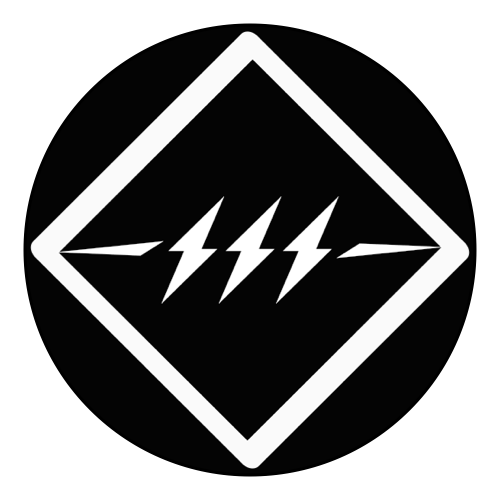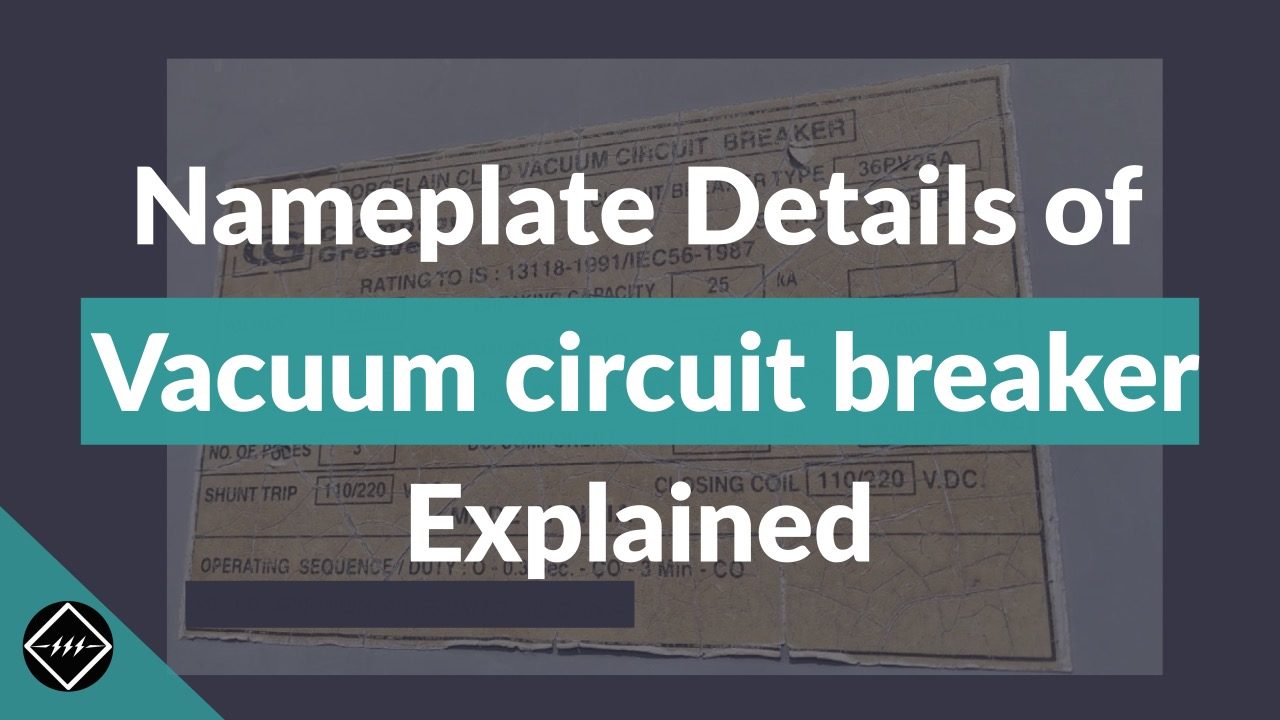Difference between Circuit breaker and Isolator
Difference between Circuit breaker and Isolator https://www.theelectricalguy.in/wp-content/uploads/2020/06/CB-VS-DS-1024x576.png 1024 576 Gaurav J Gaurav J https://secure.gravatar.com/avatar/87a2d2e0182faacb2e003da0504ad293?s=96&d=mm&r=gIn this tutorial, we’ll see the difference between circuit breaker and isolator or disconnector. You can also download the image of difference between circuit breaker & isolators, link for which is provided at the end. So, let’s start.
1 Operating condition
- Circuit breaker is a device used for interruption of normal as well as short circuit current. You can operated circuit breaker when the supply is on and as well as when the supply is off. And hence it is also called as an On Load device.
- Whereas, disconnectors or isolators has no ability to break normal or fault currents. We can only operate disconnectors in current zero condition i.e. when the supply is off. And hence, disconnector is called as an Off-load device. Why we cannot operate isolator in on load condition? Because, disconnector has no mechanism to interrupt the fault or normal current. It also does not have any insulation medium like SF6 gas or oil or vacuum.
2 Mode of operation
- Circuit breaker can work automatically. Whenever the breaker gets command from relay it operates.
- However, to operate isolator or disconnector you have to either go to the disconnector and press the pushbutton or, you have to operate it from the control room. It does not operate automatically.
3 Purpose
As the name suggest, disconnector or isolator is used to disconnect or isolate part of a system which needs to undergo the maintenance work. To understand this, we’ll have a look on a below single line diagram.
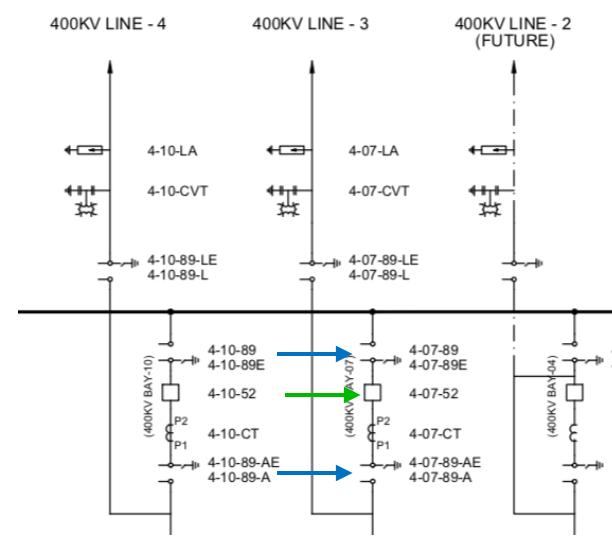
The symbol highlighted with blue arrow indicates the horizontal centre break type disconnector with single earth switch. Symbol highlighted with green arrow indicates the circuit breaker. So, let’s say I want to carry out the maintenance of the breaker. In such case, it is a safe practice to completely disconnect the breaker from the supply. And hence, to do so, I’ll open both the disconnectors which will completely isolate breaker from the supply. Now, without any worry, maintenance work can be carried out.
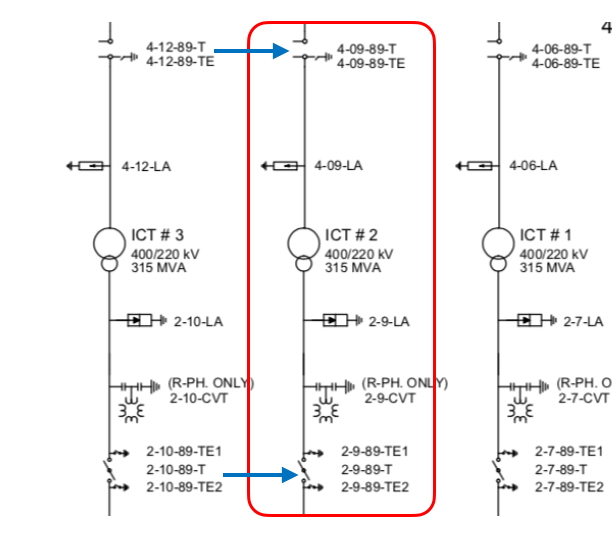
So, similarly, if I want to carry out the maintenance of the section shown above, I’ll simply open the two disconnectors or isolators indicated with blue arrow. So to conclude, we can say that, isolator or disconnector is used mainly for maintenance activity.
Whereas, the breaker is used to protect the system from fault current.
4 Earth Switch
Another important application of disconnector is to remove the trapped charges form the system. Consider the same section shown above (highlighted with red colour). To carry out the maintenance of the section, we have opened both the disconnectors or isolators indicated with blue arrow. But, even after the opening of associated isolators, there is a possibility that, there are some trapped charges still remaining in this section. And hence, if the person who is carrying out the maintenance on this section accidentally touches any of the conductor, there is a possibility that those trapped charges will flow through his body to ground. In such case, the life of that person is in danger.
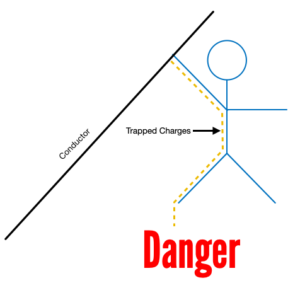
Therefore, to avoid such situation disconnectors are provided with earth switches. After you open the disconnector just close the earth switch and all the trapped charges will flow through that earth switch to ground.
And of course, this facility is not provided in the circuit breaker.
5 Re-routing of Power
Next important application which most of the people forget to tell, is to Re route the power flow. For this application, disconnectors or isolators works exactly same as the railway tracks. Which helps railway to change it’s route or lane.
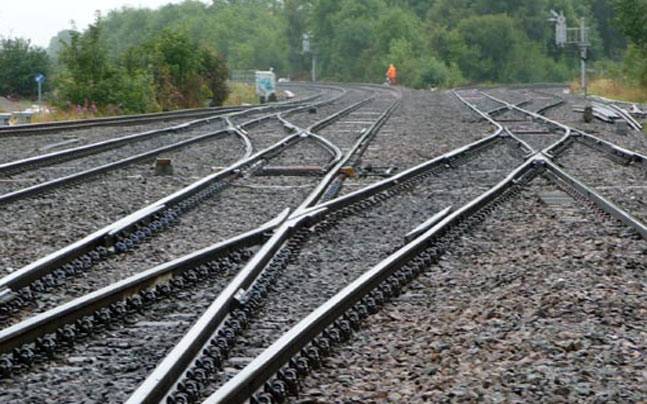
In most of the substation, two buses are provided. One is main bus and another is auxiliary bus. So, in case one of the bus fails, we can take the supply from another and continue to deliver the power. And to re route this power from one bus to another, disconnectors or isolators are used.
Of course, circuit breaker cannot serve this purpose. As we have seen, the main function of circuit breaker is to protect the system from fault current.
Bbecause of all these reasons disconnector or isolators are used in substation. While operating disconnector we must open the disconnector only if the associated circuit breaker is opened. And while closing, we must close the disconnector first and then the circuit breaker.
6 Switching Over voltages
One more difference in the circuit breaker and disconnector is that, circuit breaker’s closing and opening operation causes over voltages in the system.
Disconnector operation does not cause any over voltages in the system as it is an off load device.
You can also download the detailed difference between circuit breaker and isolator as shown below. Just click on the download button given below.
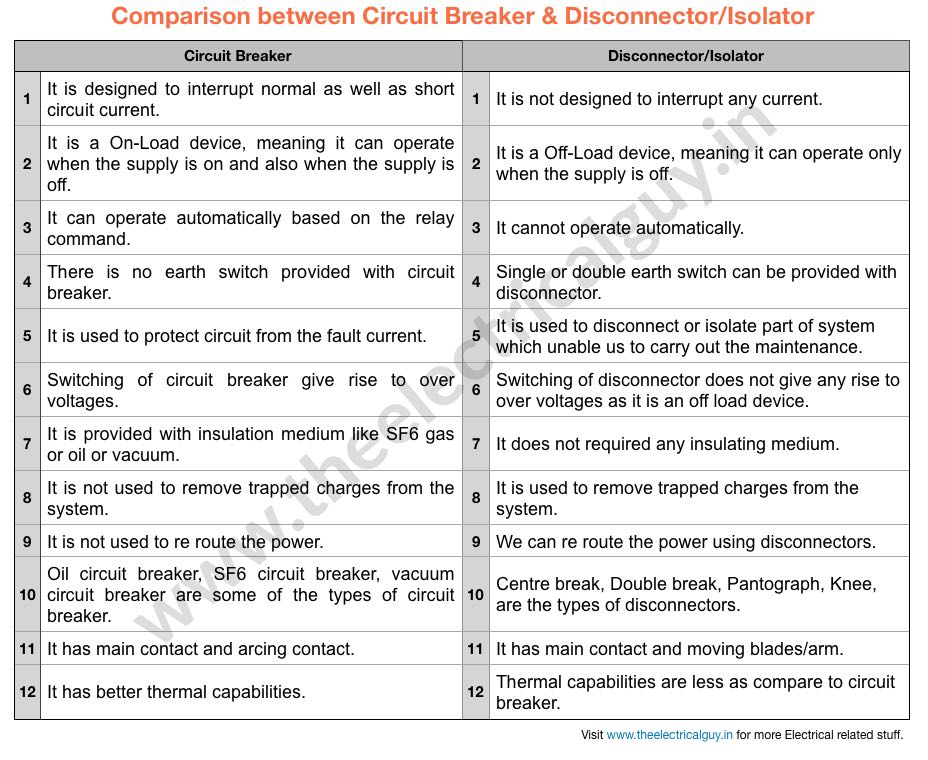
Most of the details about the equipment are mentioned on the nameplate of that equipment and it is important that we understand all the parameters mentioned on the nameplate, and for that you can watch my “Nameplate details” series which will help you to understand the details.
- Post Tags:
- Circuit breaker
- Others
Gaurav J
Electrical Engineer. Content Creator. Currently working with a High & Extra High Voltage Switchgear Industry.
All stories by: Gaurav J

